2020 Lincoln Aviator Review – VIDEO

Would you ever consider owning a Lincoln?
Just a few years ago many folks would have probably answered that question with, “Absolutely not!” A marketplace laggard, the brand had no compelling products and was probably living on borrowed time.
But today things are dramatically different for this make named after America’s 16th president, especially now that their reborn Aviator SUV has been cleared for takeoff. Ever since it debuted in concept form at the 2018 New York auto show, this three-row utility vehicle has been Lincoln’s most anticipated product launch in, well, decades. And why shouldn’t it be? With elegant styling, a seemingly well-sorted interior, plenty of versatility and some powerful drivetrains, it looked like the real deal, at least as it sat on the auto-show turntable.
With development work complete, manufacturing underway and delivery looming, we finally get to see if the Aviator lives up to all that hype, or if Lincoln’s ongoing renaissance has fizzled out like a damp sparkler on a rainy Fourth of July.
Blue-Oval Bones
In keeping with this brand’s novel use of real names opposed to the alphanumeric pandemic that’s afflicted nearly every other luxury-vehicle manufacturer, Aviator is both evocative and elegant. It’s also something of a throwback. Lincoln offered an SUV of the same name for a few years back in the early 2000s.
To save development costs, that first-generation Aviator was based on the popular Ford Explorer and history is repeating itself. The 2020 model shares major mechanical components with its blue-oval sibling. The rear-drive architecture (internally referred to as CD6) as well as the engine, transmission and myriad smaller components customers never see are all common between Aviator and Explorer. The two vehicles are even built alongside each other in Chicago, Illinois.
FAST FACTS
| : | Lincoln Aviator |
| Engine: | 3.0-liter twin-turbocharged V6 |
| Output: | 400 horsepower, 415 pound-feet of torque |
| Transmission: | 10-speed automatic |
| U.S. RWD Fuel Economy (MPG): | 18 city, 26 highway, 21 combined |
| U.S. AWD Fuel Economy (MPG): | 17 city, 24 highway, 20 combined |
| CAN AWD Fuel Economy (L/100 km): | 13.7 city, 9.7 highway, 11.9 combined |
| U.S. Base Price: | $52,840, including $1,095 for delivery |
| CAN Base Price: | $77,700, including $2,200 in ancillary charges |
| : | Lincoln Aviator Grand Touring |
| Plug-In Hybrid Powertrain: | 3.0-liter twin-turbocharged V6 with 75-kW electric motor, 13.6 kWh lithium-ion battery |
| Output: | 494 horsepower, 630 pound-feet of torque |
| Transmission: | 10-speed automatic |
| U.S. Fuel Economy (MPG): | Not yet rated |
| CAN Fuel Economy (L/100 km): | Not yet rated |
| U.S. Estimated As-Tested Price: | $93,570, including $1,095 for delivery |
| CAN Estimated Price: | Not available yet |
This sort of component sharing is as common in the automotive industry as finding crumbs at the bottom of a bag of pretzels. Audi borrows plenty of parts from more workaday Volkswagens, Lexus models appropriate plenty from Toyotas, etc.
Even though these two utility vehicles are blood relatives they’re visually distinct. In fact, no body panels are shared between them, a remarkable shift away from badge engineering that’s plagued Detroit-based automakers for decades. They also have unique suspension designs.
SEE ALSO: 2018 Lincoln Navigator Black Label Review – VIDEO
Aside from the styling, Aviator is differentiated from Explorer in other important ways. It offers far more advanced technology, has a higher maximum-tow rating – up to 6,700 pounds – and is even available with a performance-tuned hybrid drivetrain pumping out 630 lb.-ft. of torque!
A Right-Sized Navigator
But the visual differences between this Ford and Lincoln are particularly acute inside. The Aviator’s high-quality cabin is what will turn many prospective buyers into paying customers. Borrowing heavily from the Navigator’s decor, this interior is excellent all around, regardless of trim level.
Inside, it’s tastefully executed, and the materials are of high quality, with vast swaths of leather, soft plastic and high-quality controls. The tape-deck inspired shifter buttons borrowed from the Navigator are refreshingly different yet easy to use. A 10.1-inch display and a reconfigurable digital instrument cluster is standard, as is a slew of advanced driver-assistance tech, I’m talking about the usual suspects like blind-spot monitoring, lane-keeping assist and automatic high-beams.
Making the overall experience just that much more exclusive are electric door latches, very similar to what’s offered on Lincoln’s Continental sedan. The exterior handles don’t move or operate mechanical linkage as you’d expect, rather, your fingers activate a microswitch that then unlatches the door. Inside, there are corresponding electric buttons, no physical handles to fumble with. All this tech feels special, ritzy in a way you might not expect.
Further accentuating the premium feel, Lincoln worked with the Detroit Symphony Orchestra to create 25 custom alert tones for different vehicle warnings, things like the door-ajar or the unbuckled-seatbelt chimes.
Speaking of sound, several audio systems are available in the Aviator. The pinnacle offering is a rockin’ 28-speaker Revel Ultima 3D unit that probably has more processing power than an Amazon server farm.
Providing enhanced comfort, Lincoln’s signature and borderline-overkill 30-way-adjustable Perfect Position front seats are available. Spend the time to get them set just right and you should be sublimely comfortable all day long. They’re heated and ventilated, plus they offer a variety of massage functions. Adjustments to these chairs is made via convenient, door-mounted buttons and a smattering of digital controls on that pop up on the infotainment screen when summoned.
SEE ALSO: 2019 Lincoln Nautilus vs. 2019 Infiniti QX50 – VIDEO
As with other Lincolns, super-premium Black Label themes are also offered. They bring more top-quality cow hides, soft materials and unique color combinations to the table. Three of these are on the menu including Flight, which features tan and ebony leather with beautiful engine-turned accents for a technical look. Destination features mahogany-hued leather and khaya wood trimmings for a more traditional – though no less luxurious – feel. Finally, Chalet is perhaps the boldest combination, with high-contrast espresso and white trimmings.
But opting for a Black Label Lincoln gets you more than just an upgraded interior. The vehicle-buying process is simplified with the help of a dedicated concierge. Owners are treated to unlimited carwashes at any participating Black Label Lincoln dealership and free annual vehicle detailing. They also get a 4-year/50,000-mile premium maintenance plan with complimentary pickup and delivery service, plus more.
The Power(train) of Choice
As mentioned earlier, two flavors of Aviator are available. You can get the regular internal-combustion-powered model and a Grand Touring plug-in hybrid.
Standard versions are motivated by a smooth-running 3.0-liter twin-turbocharged V6. It’s good for a stout 400 horsepower with 415 pound-feet of torque and is paired with a 10-speed automatic transmission.
Grand Touring variants features that that same engine and gearbox but also gain a 75-kW electric motor and 13.6 kWh lithium-ion battery pack. These additions, along with the wiring and software to tie everything together, result in a 94-horse increase and a walloping 630 pound-feet of torque!
Hook one of these plug-in Aviators to a 240-volt, Level-2 charger and the battery can be replenished in three to four hours. When using a standard 110-volt household outlet you’d best budget around 10.
Naturally, the Aviator is available with either rear-drive or all-wheel drive. Black Label and Grand Touring versions come standard with four-corner traction.
On the consumption front, expect a rear-drive combustion-powered model to return 18 miles per gallon city, 26 highway and 21 mpg combined. All-wheel-drive examples are rated at 17, 24 and 20, respectively. The Grand Touring version has not been rated just yet, but it should be more economical than similarly equipped non-hybrid Aviators.
As is expected these days, a variety of driving modes is offered, up to seven, in fact. Normal is perfect for everyday motoring, while Conserve helps reduce fuel consumption. Excite is analogous to a sport mode, Slippery helps you cope with snow or ice and Deep Conditions is tuned for rough terrain.
SEE ALSO: 2017 Lincoln Continental vs. 2017 Volvo S90 – VIDEO
Grand Touring models gain two extra modes: Pure EV and Preserve EV. The former runs the vehicle solely and silently on electrons, at least in most conditions. If demand exceeds battery capacity the driver can allow the engine to turn on. The latter mode runs the show on internal combustion, reserving battery capacity for use later when it’s more efficient. Using the engine, it can also charge the battery up to 75 percent.
An official electric-only driving range for Grand Touring models has not been published, but it is estimated at about 18 miles.
Creature Comforts
Beyond the standard litany of features, the Aviator can be enhanced with a variety of amenities. Lincoln Co-Pilot360 Plus is available, the automaker’s suite of advanced driver-assistance technology. It includes things like Traffic Jam Assist, Evasive Steering Assist, Reverse Brake Assist and Active Park Assist.
Three suspension technologies are offered in the 2020 Aviator. Lower-end models ride on traditional coil springs. An up-level system with adaptive dampers is also available. But the Air Glide Suspension with Road Preview is the most advanced offering, part of the $3,000 Dynamic Handling Package, though at least the Reserve II options group is also required, tacking an additional $11,625 onto the price tag. It features a forward-facing camera that scans the road surface up to 50 feet ahead, adjusting the suspension in advance of bumps and dips to provide a smoother ride.
The Drive
Putting it in motion, the Aviator is impressively quick. Acceleration is never an issue with 400 horses and a willing transmission onboard. Smooth running, its engine emits a light grumble when working hard, though most of the time it’s completely hushed. Overall, this vehicle’s dynamics are excellent, building on what the new Explorer already offers.
SEE ALSO: How Lincoln Black Label Elevates Customer Service – VIDEO
Grand Touring models are, not surprisingly, appreciably quicker than standard combustion-powered versions, their deep well of torque providing near-Saturn V levels of thrust. The ability to run them purely on battery power, or just sit with the air conditioning at full blast and the radio playing all without burning a drop of gasoline is a wonderful thing.
In keeping with Lincoln’s “Quiet Luxury” tagline, the Aviator’s sumptuous cabin is comfortable and serene, free of unwanted noise. The ride is appropriately smooth for an American Luxury vehicle, but never does it feel sloppy, at least when equipped with the optional air suspension system. Regrettably, the Road Preview feature seemed rather ineffective. The ride quality was cushy to be certain, but it was by no means magically better than what you get in rival vehicles. More testing is needed here, preferably on bomb-cratered Michigan roads to really put it through its paces.
The Verdict: 2020 Lincoln Aviator Review
So, what’s all this luxury and good taste cost? The Aviator starts at around $52,195, including $1,095 in delivery fees. Check every options box on a Black Label Grand Touring model and you’ll have no problem spending more than $93,000, which sounds insane for a Lincoln, but it may actually be worth the price.
At this point, I’ll ask the same question I did at the beginning of this piece. Now that you’ve read my review (and hopefully watched the accompanying video), would you consider parking a Lincoln in your garage? I would, especially the 2020 Aviator, which is poised to be a transformative product for this resurgent brand.
Discuss this story on our Lincoln Forum
2020 Lincoln Aviator, 2020 Lincoln Aviator Grand Touring
LOVE IT
- Powerful turbocharged acceleration
- Crazy-comfortable optional seats
- Sumptuous interiors
- Refined on-road ride
- Black Label benefits
- Quiet cabin
- Same benefits listed above
- Electric-only advantages
- Improved efficiency
- Storming torque
LEAVE IT
- Fuel efficiency could be better
- Gets expensive
- Even steeper pricing
- Limited EV range

Born and raised in metro Detroit, Craig was steeped in mechanics from childhood. He feels as much at home with a wrench or welding gun in his hand as he does behind the wheel or in front of a camera. Putting his Bachelor's Degree in Journalism to good use, he's always pumping out videos, reviews, and features for AutoGuide.com. When the workday is over, he can be found out driving his fully restored 1936 Ford V8 sedan. Craig has covered the automotive industry full time for more than 10 years and is a member of the Automotive Press Association (APA) and Midwest Automotive Media Association (MAMA).
More by Craig Cole



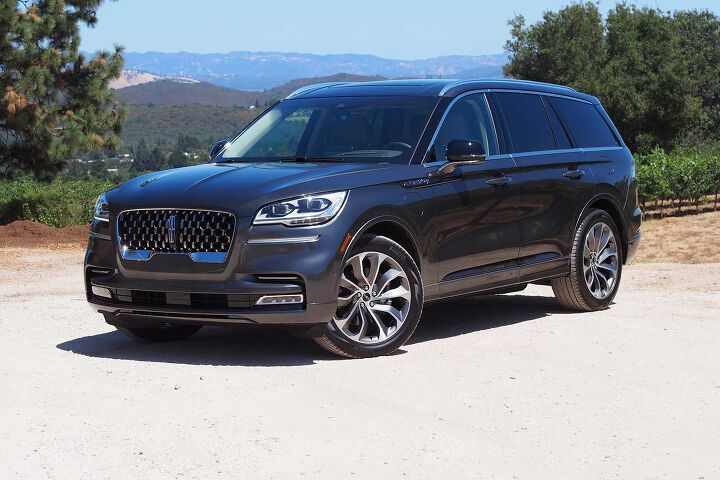
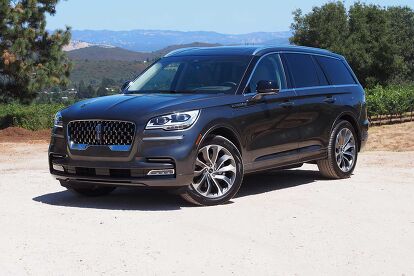










































































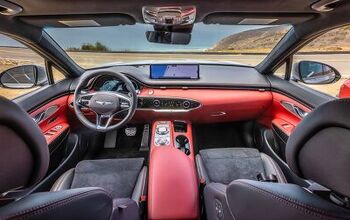
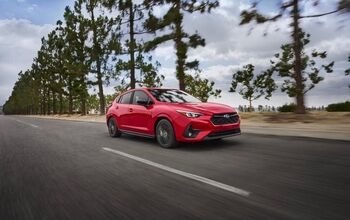



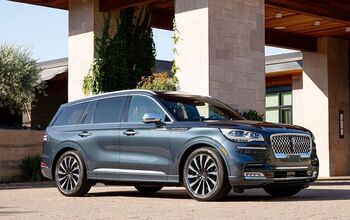
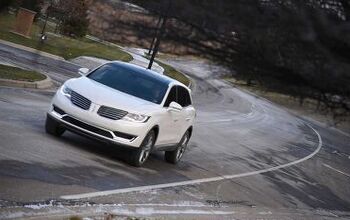
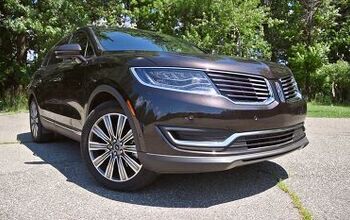










Comments
Join the conversation